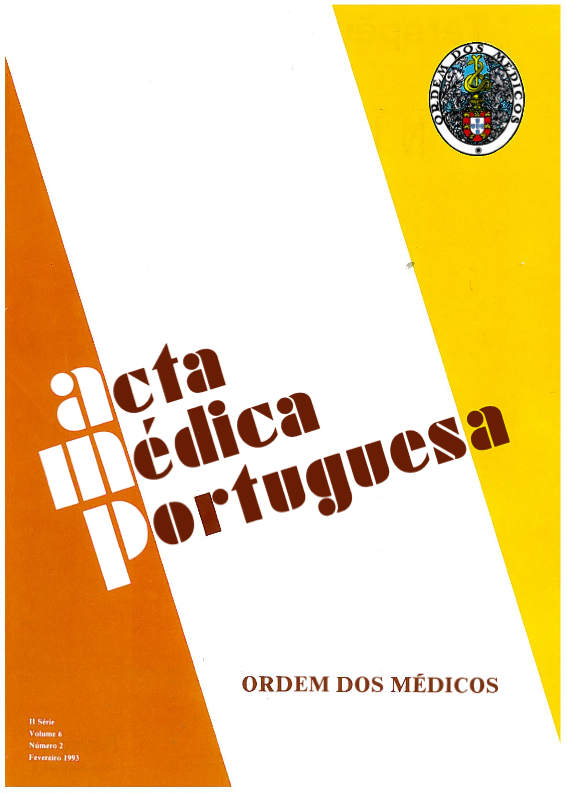Bone marrow transplantation with major ABO incompatibility. Experience at the bone marrow transplantation unit of the Center of Lisbon at the IPOFG.
DOI:
https://doi.org/10.20344/amp.3057Abstract
Thirteen patients submitted to major ABO incompatible, HLA A and B identical, mixed lymphocyte culture negative bone marrow transplantation (BMT) were retrospectively evaluated. Gravity sedimentation by hydroxyethyl starch was used in almost all cases to deplete erythrocytes from bone marrow (12/13): a removal rate or 90%--corresponding to an erythrocyte residual volume of 27.4 rate ml--and a nucleated cell recovery of 76% (mean values) were obtained. All patients underwent a hyperhydration regimen and received corticosteroid prophylaxis before bone marrow infusion. Considering the most important immunohematological problems associated to this type of transplant we verified that seven patients developed minor complications, and among them only one had long term consequences. In comparison with the control group, ABO identical and with minor incompatibility, the study group had delayed onset of erythropoiesis and needed greater erythrocyte transfusion support. We concluded that major ABO incompatibility does not constitute a drawback to BMT success in most patients.Downloads
Downloads
How to Cite
Issue
Section
License
All the articles published in the AMP are open access and comply with the requirements of funding agencies or academic institutions. The AMP is governed by the terms of the Creative Commons ‘Attribution – Non-Commercial Use - (CC-BY-NC)’ license, regarding the use by third parties.
It is the author’s responsibility to obtain approval for the reproduction of figures, tables, etc. from other publications.
Upon acceptance of an article for publication, the authors will be asked to complete the ICMJE “Copyright Liability and Copyright Sharing Statement “(http://www.actamedicaportuguesa.com/info/AMP-NormasPublicacao.pdf) and the “Declaration of Potential Conflicts of Interest” (http:// www.icmje.org/conflicts-of-interest). An e-mail will be sent to the corresponding author to acknowledge receipt of the manuscript.
After publication, the authors are authorised to make their articles available in repositories of their institutions of origin, as long as they always mention where they were published and according to the Creative Commons license.









